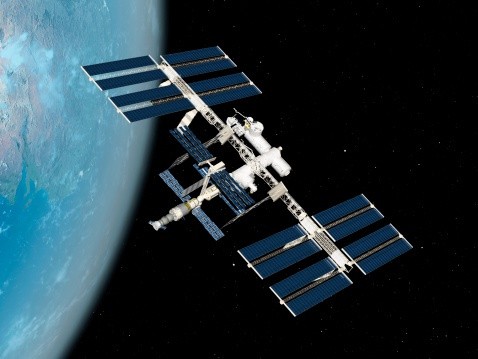
Astronauts aboard the International Space Station have been forced to take shelter inside the docked Starliner spacecraft after a Russian satellite broke apart in orbit.
Low-Earth Orbit Blast
On June 26, the Roscosmos-operated observation satellite Resurs-P1 Russian Earth broke apart into several pieces at around 11 am EDT. According to the U.S. Space Command, the satellite shattered low-Earth orbit near the International Space Station at an altitude of about 220 miles (355 kilometers).
Orbit-monitoring company LeoLabs first noticed the Resurs-P1 satellite breaking apart when it detected a debris-generating event in Low Earth Orbit. The US Space Command said that there were no immediate threats to other satellites and is continuing to make assessments to support the safety and sustainability of the space domain.
In the estimated 88-minute window of RESURS-P1's initial breakup, it passed over many locations on Earth, including the Plesetsk rocket site. According to space tracker and Harvard astronomer Jonathan McDowell, there was no immediate indication from airspace or maritime alerts that Russia had launched a missile to strike the satellite.
The Russian satellite has been declared dead since 2022. Until now, the exact cause of the satellite's breakup remains unknown.
Using its global network of space-tracking radars, the US Space Command detected more than 100 pieces of trackable debris. By the afternoon of June 27, radars from LeoLabs had spotted at least 180 pieces.
According to LeoLabs, the number of debris is expected to increase in the coming days. Due to the low orbit location of this debris cloud, LeoLab expects that it will take weeks to months before the hazard has passed.
The International Space Station is located at about 200 miles (322 kilometers) above Earth, an area which is highly populated with satellites and thousands of pieces of space junk created from old spacecraft or other manufactured objects.
Most pieces of space debris are pulled back by the Earth's gravity and burn up in the atmosphere. However, some pieces do survive the fall to Earth.
This year, two pieces of space junk were recovered in the US, including one piece that crashed through a man's home in Florida.
Scientists have proposed multiple ways to tidy up Earth's orbit, such as gathering junk up in nets, collecting it with clawed robots, or firing a half-mile-long (0.8 kilometer) tether from another spacecraft to grab the pieces of debris.
The recent event also highlights the risks faced by NASA and Boeing in completing its beleaguered Starliner mission, which left Wilmore and Williams stranded aboard the International Space Station.
Seeking Refuge
The debris from the breakup of Resurs-P1 led the NASA crew onboard the space station to seek shelter as a precaution. After about an hour, the station resumed normal operations. In its recent post on social media platform X, NASA's Mission Control said that it continued to monitor the path of the debris.
The nine crew members include Boeing Starliner's stranded butch Wilmore and Suni Williams. The astronauts took cover for about an hour on June 27, shortly after 9 p.m. EDT (0100 GMT). Astronauts also sheltered in SpaceX's Crew Dragon and a Russian Soyuz spacecraft.
RELATED ARTICLE : Metallic Space Debris That Crashed, Tore Through Florida Home Prompts Family To Sue NASA; Is the Agency Really To Blame For the Cosmic Debris Damage?
Check out more news and information on International Space Station in Science Times.
© 2025 ScienceTimes.com All rights reserved. Do not reproduce without permission. The window to the world of Science Times.












